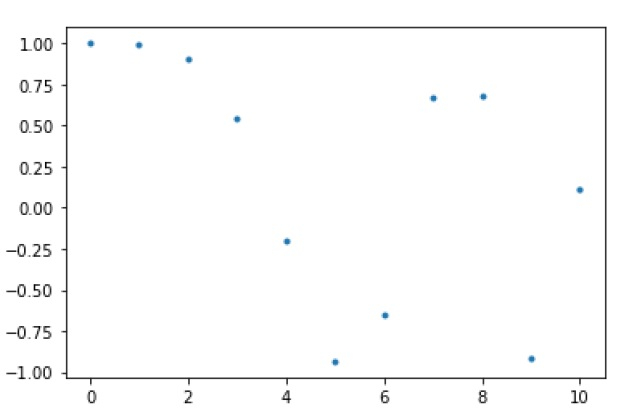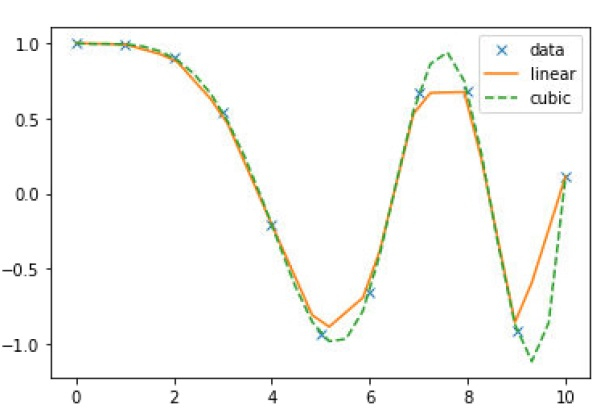
 Data Structure
Data Structure Networking
Networking RDBMS
RDBMS Operating System
Operating System Java
Java MS Excel
MS Excel iOS
iOS HTML
HTML CSS
CSS Android
Android Python
Python C Programming
C Programming C++
C++ C#
C# MongoDB
MongoDB MySQL
MySQL Javascript
Javascript PHP
PHP
- Selected Reading
- UPSC IAS Exams Notes
- Developer's Best Practices
- Questions and Answers
- Effective Resume Writing
- HR Interview Questions
- Computer Glossary
- Who is Who
Comparing ‘cubic’ and ‘linear’ 1-D interpolation using SciPy library
Below python script will compare the ‘cubic’ and ‘linear’ interpolation on same data using SciPy library −
Example
First let’s generate some data to implement interpolation on that −
import numpy as np from scipy.interpolate import interp1d import matplotlib.pyplot as plt A = np.linspace(0, 10, num=11, endpoint=True) B = np.cos(-A**2/9.0) print (A, B)
Output
The above script will generate the following points between 0 and 4 −
[ 0. 1. 2. 3. 4. 5. 6. 7. 8. 9. 10.] [ 1. 0.99383351 0.90284967 0.54030231 -0.20550672 -0.93454613 -0.65364362 0.6683999 0.67640492 -0.91113026 0.11527995]
Now, let’s plot these points as follows −
plt.plot(A, B, '.') plt.show()

Now, based on fixed data points, we need to create two interpolate functions-one for ‘linear’ and other for ‘cubic’. Let’s create it −
function_interpolate1 = interp1d(A, B, kind = 'linear') function_interpolate2 = interp1d(A, B, kind = 'cubic')
To see the clear difference in both interpolations, we will create a new input of more length by using the same function as used for old input −
Anew = np.linspace(0, 10, num=30, endpoint=True) plt.plot(A, B, 'x', Anew, function_interpolate1(Anew), '-', Anew,function_interpolate2(Anew), '--') plt.legend(['data', 'linear', 'cubic'], loc = 'best') plt.show()


Advertisements
